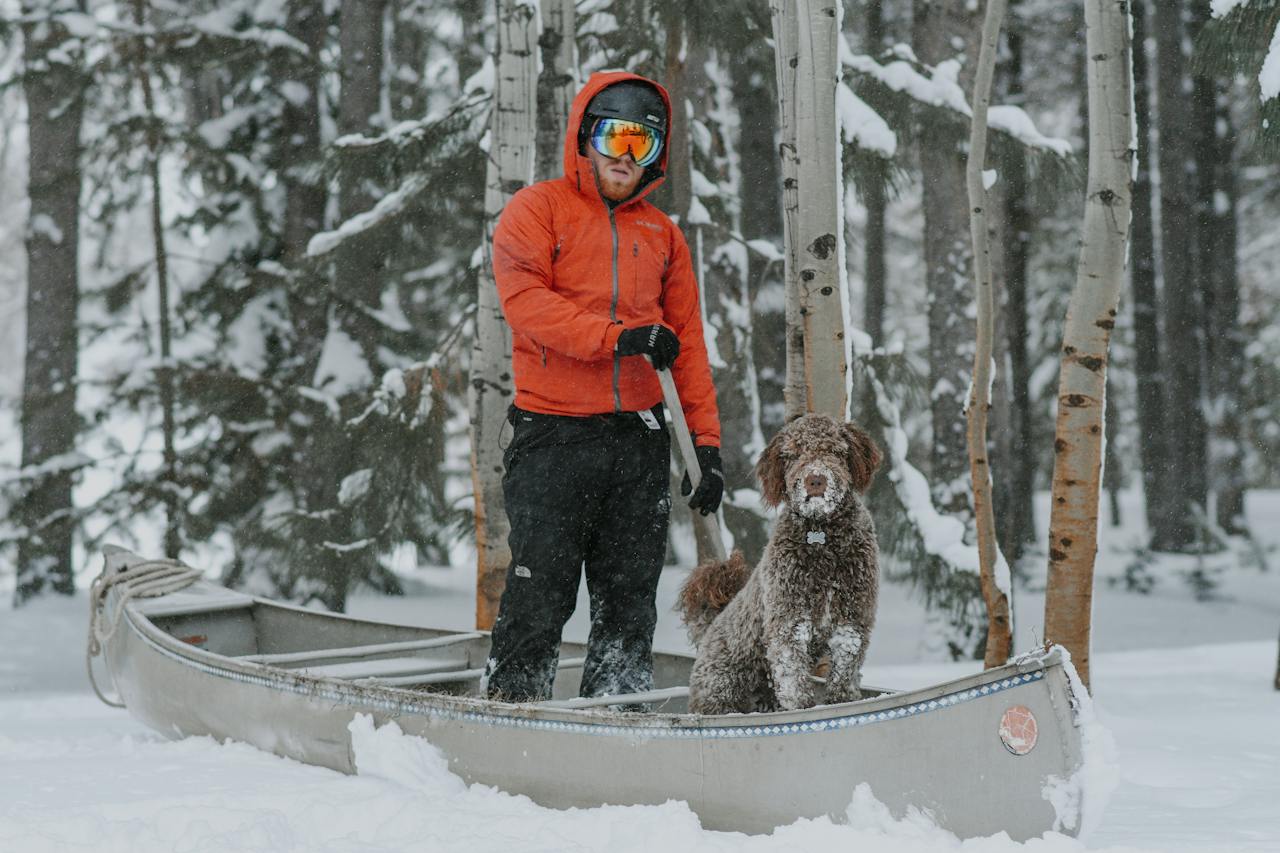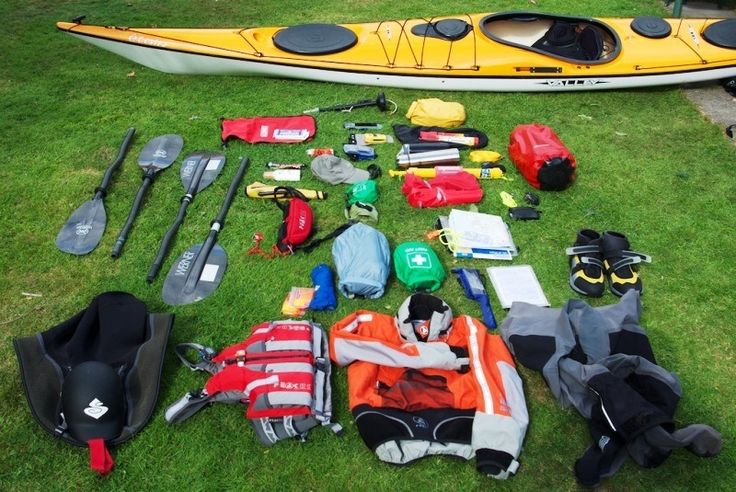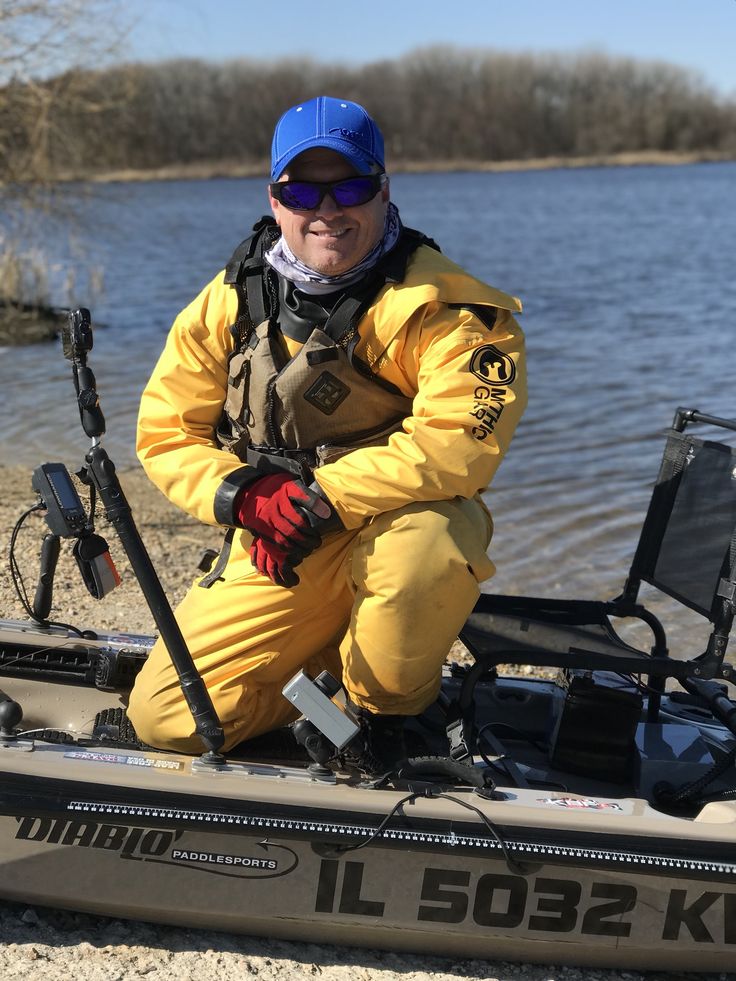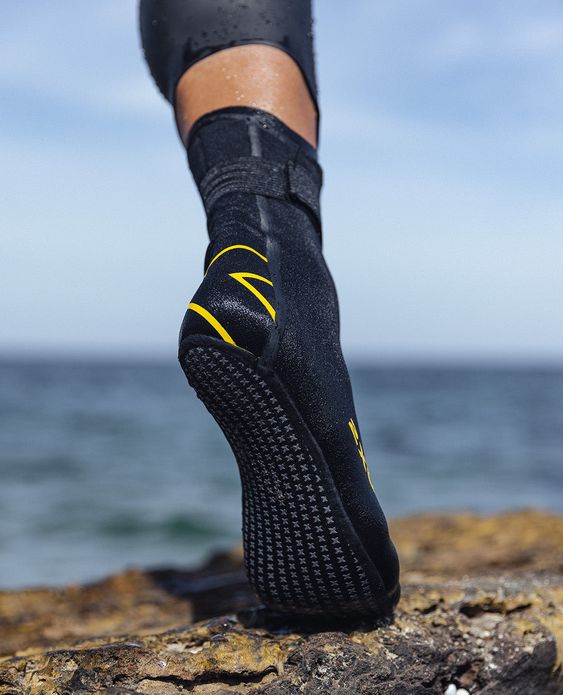Getting the Hang of Cold Weather Kayaking
I’ll never forget my first winter kayaking experience. The chilly weather was a bit intimidating, but the peaceful snowy scenery totally justified it. For kayakers, dealing with and getting used to cold conditions involves getting ready, knowing your stuff, and having the proper equipment. Let’s chat about how to keep feet warm for cold weather kayaking.

Photographed by Jenny Uhling
Keeping Warm in Cold-Weather Kayaking
For those of us who love winter kayaking, managing temperature is a big deal for both safety and coziness. It’s key to ward off things like hypothermia and frostbite. Here are some smart tips to stay toasty during your chilly kayaking escapades:
- Layering Wisdom: Kick things off with a moisture-wicking base layer, add an insulating middle layer, and cap it off with a waterproof outer layer. Pay extra attention to your feet, hands, and noggin—they’re the spots most prone to the cold.
- Footwear Magic: Get yourself some neoprene socks or booties. They’re top-notch for insulation and keep your feet warm, even if they get a bit wet.
- Stay Dry: Moisture can quickly bring down your body heat, so make sure your gear is waterproof, and your kayak doesn’t turn into a mini-pool. Try not to break a sweat if you can help it.
- Warm-Up Breaks: Pack a thermos with a hot beverage. It’s a game-changer for warming up during your breaks.
Picking the Perfect Kayak and Gear
Getting the right kayak and gear for cold-weather kayaking is a must for a safe and enjoyable time on the water. Here’s a quick guide to what matters:
- Kayak: Look for one that’s stable, strong, and has enough room to stash your stuff for a comfy ride.
- Spray Skirt: Go for a top-notch spray skirt to keep both you and the inside of your kayak dry.
- Paddle: Grab a paddle with feathered blades—it reduces wind resistance, giving you a smoother stroke.
- PFD (Personal Flotation Device): You’ve got to have one, and make sure it’s made for cold weather, keeping you warm and floating.
- Cold-Weather Threads: Don’t skimp on your gear. Get insulated gloves, waterproof dry suits, and a cold-ready head cover.
To sum it up, making winter kayaking comfy and safe is about knowing the cold challenges, having the right gear, and being prepared. As a kayaking enthusiast, I can assure you that the serene winter landscape makes this experience truly unforgettable.

Photographed by HighRock
Mastering Cold Weather Kayaking: A Guide to Staying Warm and Safe
Reflecting on my first winter kayaking experience, I realized how crucial it is to keep my feet warm. Since then, I’ve delved into the world of cold-weather kayaking, researching the best ways to stay warm. Let me share some practical insights.
Getting Started with Base Layers
The key to warm feet in kayaking is a solid base layer. Moisture-wicking materials like merino wool or synthetics work wonders. Here’s what I prefer:
- Socks: Go for merino wool or synthetic blend socks. Opt for thicker ones for better insulation.
Insulating Layers that Work
Effective insulation means trapping heat while keeping moisture at bay. Top choices for insulating layers are:
- Fleece: Use fleece-lined booties over your base layer socks for added insulation.
- Neoprene: Neoprene booties are excellent for insulation and easy in-and-out of the water. Adjust thickness based on weather and preference.
Outer Protection: Drysuits vs. Wetsuits
Understanding the distinction between drysuits and wetsuits is crucial:
Drysuit
Pros:
– Keeps you dry
– Better insulation
Cons:
– Can be expensive
– Tricky to put on


Wetsuit
Pros:
– More affordable
– Easy to put on
– Insulates when wet
Cons:
– Not as warm in very cold conditions
– May not suit extreme cold
In colder seasons, a drysuit keeps my feet warmer. It seals out water, and I can adjust insulation beneath based on the temperature. Wetsuits are great for milder conditions, providing some insulation even when wet.
Keep Your Feet Warm
Choosing the Right Footwear
Selecting proper footwear is a game-changer. I recommend neoprene booties or water shoes designed for water sports. Here’s a quick comparison:
Neoprene Booties
Warmth: Excellent
Protection: High
Grip: Great on slippery surfaces
Drying: Slower


Water Shoes
Warmth: Good
Protection: Moderate
Grip: Varies by design
Drying: Faster
Sock Selection Matters
Aside from footwear, your sock choice is crucial. Skip cotton and go for wool or synthetic socks for moisture-wicking and insulation.
In a nutshell, the right footwear and socks are vital for warm feet while kayaking. Neoprene booties, water shoes, wool, and synthetic socks are top choices. Always pack extras for a comfortable water adventure.
Accessories for Warmth and Safety
From recent experiences, I’ve realized the importance of gear and safety accessories. Here’s what you need for warmth and safety in cold weather kayaking:
Gloves and Pogies
Gloves: Neoprene gloves offer warmth and grip, ensuring comfort while paddling.
Pogies: Insulated paddle covers that attach to your kayak paddle for better grip and control.
Safety Gear
Spray Skirt: Keeps water out of your cockpit, maintaining a dry interior.
Bilge Pump and Dry Bag: Remove water quickly and keep essentials dry.
Headlamp: A waterproof headlamp is essential for short winter days, providing safety during dark hours.
Safety Measures: Hypothermia is a risk in cold kayaking. Always be prepared with a waterproof bag containing spare clothes, a thermal blanket, and communication tools.
Winter kayaking offers a unique perspective, but prioritize safety. Equip yourself with gloves, pogies, a spray skirt, bilge pump, and safety essentials for a comfortable and secure journey.
Kayaking in Winter Environments
Navigating Cold and Icy Waters
The first time I paddled through icy waters, I was mesmerized by the breathtaking beauty of the winter landscape. However, I quickly learned that winter kayaking comes with its own set of challenges. For instance, you need to be extra cautious when launching your kayak in icy conditions, as slippery surfaces can lead to accidents.
Kayaking in icy conditions requires caution. Follow this checklist:
- Check the weather forecast.
- Use a sit-inside kayak with a spray skirt.
- Dress in layers for temperature regulation.
- Insulate hands and feet with neoprene gloves and booties.
Challenges of Winter Terrain and Wildlife
Winter kayaking brings unique challenges:
- Be cautious of fast-moving water due to ice and snow melt.
- Watch for sharp rocks near the shore with lower water levels.
- Respect wildlife habitats, maintaining a safe distance.
- Launch carefully to avoid slipping on wet or icy surfaces.
Winter paddling is invigorating, offering a unique connection with nature. Prepare with the right gear, stay cautious, and share your plans for a safe and memorable experience.
For the most comprehensive guide to winter kayaking click Kayak in the Winter: Essential Gear and Safety Tips [Complete Guide 2024]
Conclusion
Winter kayaking is an exhilarating experience, offering a unique blend of challenge and beauty. Armed with the right gear, knowledge, and safety precautions, you can make the most of your cold-weather adventures on the water. Remember to stay warm, stay safe, and enjoy the tranquility of winter paddling. If you have more questions or need further guidance, feel free to ask!
Frequently Asked Questions
Q: What are the best materials for socks to maintain warmth while paddling?
A: Opt for wool or synthetic socks designed for thermal insulation. Wool is excellent for natural warmth, while synthetic materials like nylon or polyester wick away moisture, keeping your feet cozy.
Q: Can neoprene booties be effective for insulation during kayak excursions?
A: Absolutely! Neoprene booties are a popular choice among kayakers. They provide insulation, protection, and a snug fit, making them effective for keeping your feet warm during water adventures.
Q: What techniques are recommended for keeping your feet dry and warm in cold water conditions?
A: Key techniques include wearing moisture-wicking socks, using neoprene booties or kayaking shoes for insulation, layering socks for added warmth, and taking breaks to encourage blood flow during long paddling sessions.
Q: How do layering strategies apply to feet when preparing for a kayak trip in chilly weather?
A: Layering socks is crucial for foot warmth. Start with a moisture-wicking base layer, add a warmer material like wool, and consider additional layers like neoprene socks or booties over drysuit socks for extra insulation.
Q: What role does a dry suit play in thermal protection for your extremities while on the water?
A: A dry suit provides full-body thermal protection, including extremities. Worn over warm socks, it seals out water, preserving body heat. For added insulation, neoprene booties or kayaking shoes can be worn.
Q: Are there any innovative accessories designed specifically for foot warmth for avid kayakers?
A: While not kayak-specific, heated insoles are rechargeable accessories that keep your feet cozy during long paddling sessions. Investing in quality kayaking shoes or neoprene booties, paired with thermal socks, is also crucial for foot comfort.


3 thoughts on “How to Keep Feet Warm When Kayaking ?[2024]”